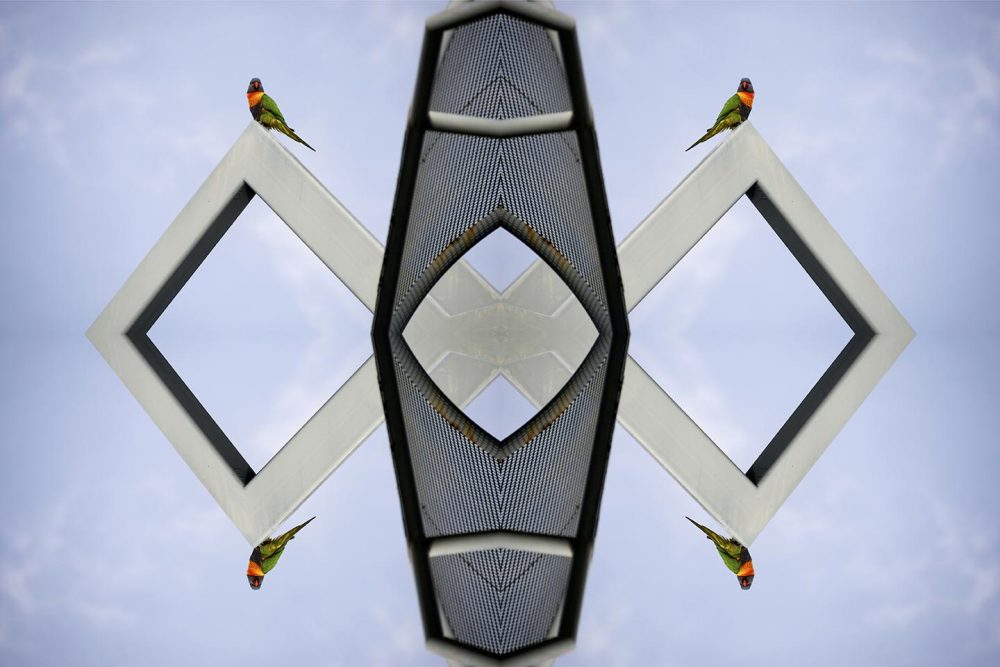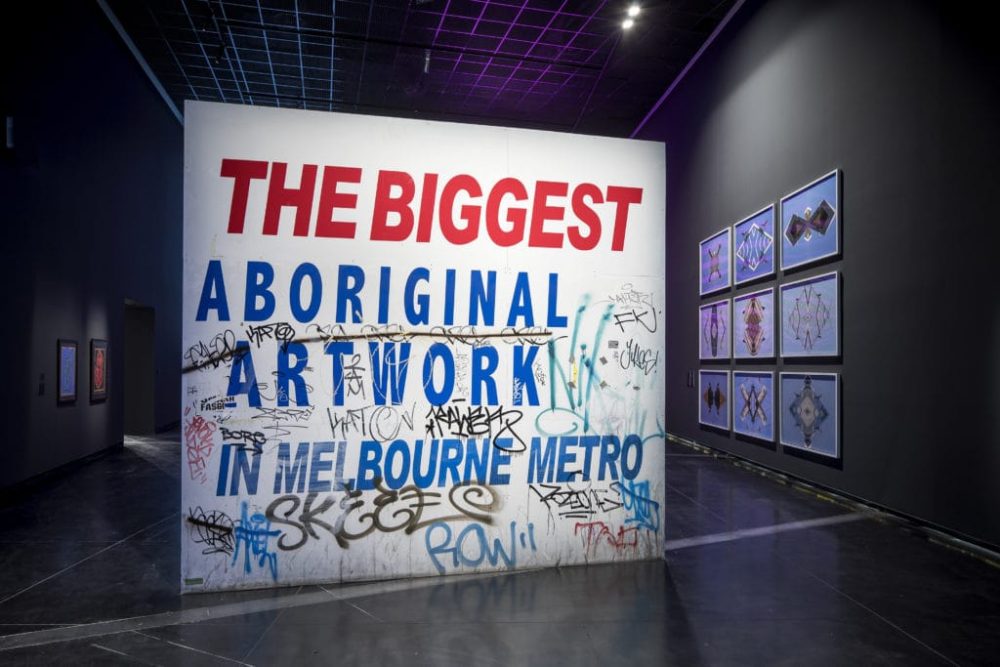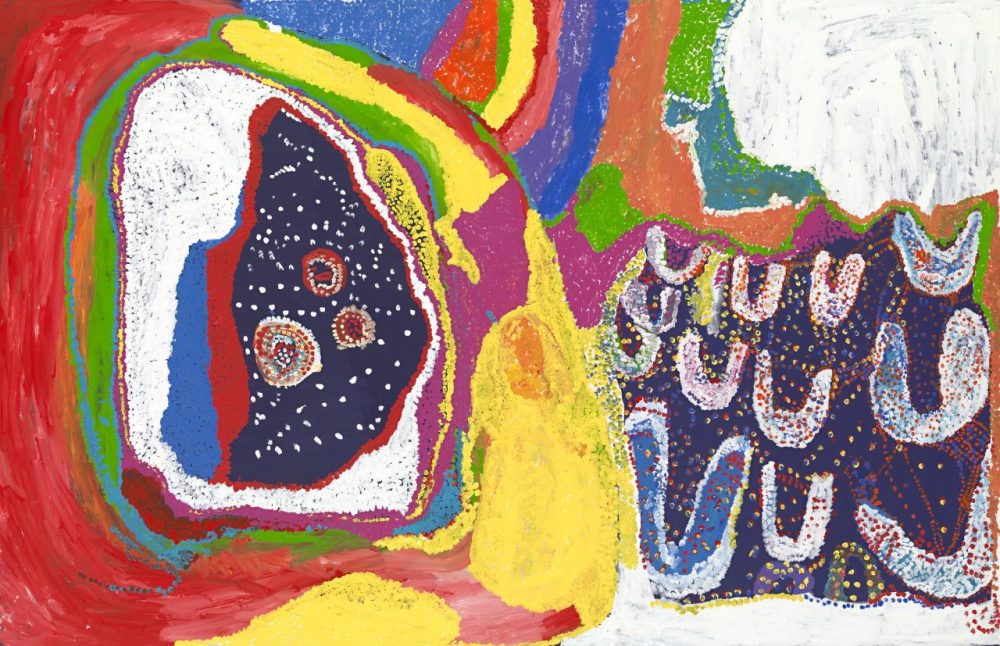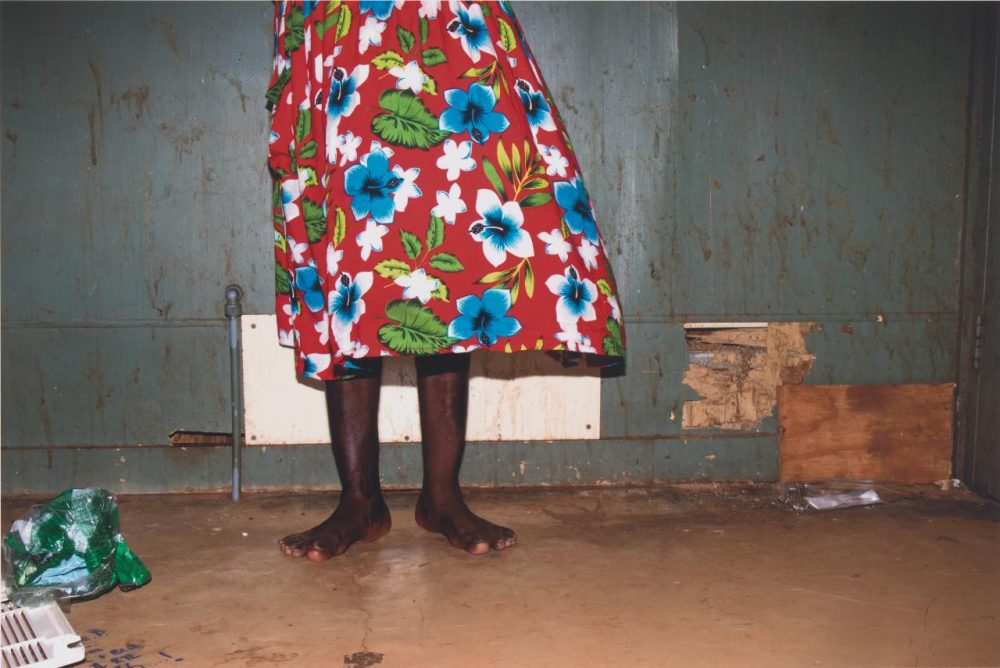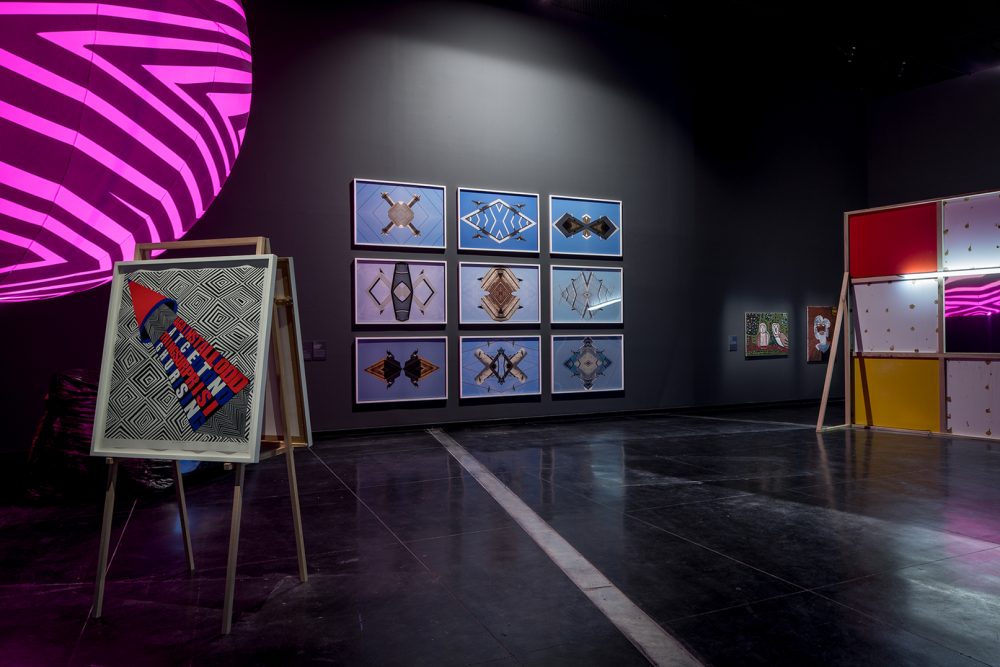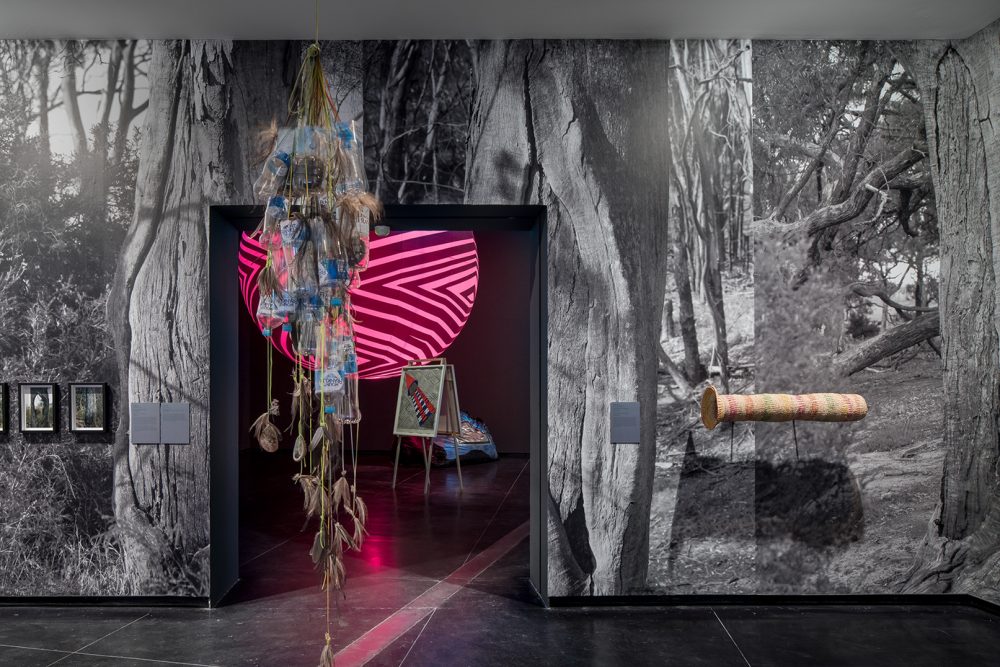‘Sovereignty’ Australian Centre for Contemporary Art (ACCA),
Curators: Paola Balla and Max Delany
17 December 2016 – 26 March 2017
Free Entry, Open 10/11am – 5pm Daily (excluding Mondays)
http://acca.melbourne/exhibition/sovereignty/
‘Who’s Afraid of Colour?’ NGV Australia, Federation Square,
Curator: Judith Ryan
16 December 2016 – 17 April 2017
Free Entry, Open 10am – 5pm Daily
http://www.ngv.vic.gov.au/exhibition/whos-afraid-of-colour/
Despite being at the forefront of political, social, and cultural resistance, indigenous women’s knowledge and practices are often omitted and rendered invisible in colonial academic, art and cultural institutions and public spaces… Aboriginal women speak back to white Australia through art and activism by naming trauma as a disruption of artistic terra nullius.’ – Paola Bella, Catalogue essay: ‘Sovereignty: Inalienable and intimate’ pg.12-13
The Indigenous artist speaks truth to power simply by the fact of his or her existence…the power of presence unnerves some in white Australia. The autonomous Indigenous body, within a colonial ideology, should not be. – Tony Birch, Catalogue essay: ‘Sovereignty and the act of being’ pg. 17
These two exhibitions – Sovereignty at ACCA and Who’s Afraid of Colour? at NGV Australia – provide a glimpse into the array of artistic forms from First Nations contemporary artists, showcasing a myriad of vibrant and distinct cultural expressions. By no means exhaustive, these two exhibitions survey the vital and proliferous landscape of contemporary indigenous art, exhibiting new commissions alongside historical works. With ‘Sovereignty’, ACCA presents an exhibition that centres upon the contemporary art of First Nations peoples of Victoria, while ‘Who’s Afraid of Colour’ focuses on Indigenous female artists – ‘great women innovators – transformers of tradition and precedent.’ Both exhibitions seek to challenge presumptions about how indigenous art is conceived and interpreted, exploring a range of mediums from traditional woven objects to sculpture, painting, photographs, and video installations.
The historical backdrop in which Sovereignty and Who’s Afraid of Colour? take place is inescapable. By the fact of their very existence, these exhibitions are inherently political, illustrating the intimate link between art and activism. The title ‘Sovereignty’ is itself an assertion of First Nations peoples’ claim to the land, bringing to mind the legal fiction of terra nullius and the history of illegal invasion and occupation, dispossession and destruction. The exhibition is explicitly situated amidst current debates related to constitutional recognition and treaty, and the historic and ongoing struggles of First Nations people for self-determination and land rights. Who’s Afraid of Colour? boldly proclaims a politics of difference and identity, centring the perspectives and voices of indigenous women.
As the conversation surrounding ‘Australia/Invasion’ Day demonstrate, there is widespread and collective cognitive dissonance when it comes to acknowledging the foundational violence on which the Australian colonial-settler state rests. As a nation, over two centuries after the fact, we still fail to reconcile the historical legacy of our national identity. As the common protest refrain goes: ‘white Australia has a black history’— yet the bedrock of white-settler Australian culture is rooted in longstanding denial and amnesia toward its indigenous past. It is important to note the authoritative role museums, galleries, and art institutions play in interpreting and legitimizing contested histories, and to recognize the power they hold as gatekeepers of cultural production and knowledge. As purveyors of ‘official culture’, museums shape which – and how – histories are told and subsequently received by the public. The ‘white cube’ of elite cultural institutions often privilege a western and Eurocentric history and lens onto the world. Colonialism, beyond its economic and socio-political manifestations, is perhaps most omnipresent within the realm of culture; as the decolonial theorist Ivan Muniz Reed writes: ‘so much of the modern world we know and experience has been constructed out of western imperial categories…the coloniality of knowledge is perhaps harder to discern and much more insidious to overcome.’
It is important, then, that ‘Sovereignty’ is conceived through a collaborative curatorial model, in partnership with the artist and curator Paola Bella, a Wemba-Wemba and Gunditjmara woman. In the words of Max Delany, the co-curator of Sovereignty and ACCA’s Artistic Director, it was a ‘curatorial process informed by First nation communities, knowledge, and cultural expression … structured around a set of practices and relationships in which art and society, community and family, history and politics are inextricably connected.’ Sovereignty represents a new approach in curatorship and knowledge production: ‘a shift from authorial, institutional modes of exhibition-making towards more self-critical, consultative and collective models.’ A curatorial practice that aims to challenge the legacy of colonialism must necessarily restructure and reinscribe prevailing discourses with alternative perspectives and narratives, replacing the hegemony of Eurocentric categories and standards with a from of ‘epistemic disobedience.’ As Paola Balla her self states – ‘I am challenging working within the colonial institution, because I have a cultural and political responsibility to speak back whilst collaborating with non-indigenous practitioners.’ ‘Speaking back’ to white Australia necessitates traversing across gendered and racial lines, to embody a politics of resistance whist also celebrating and asserting the endurance and vitality of one’s own cultural identity. These artworks articulate resistance and survival, self-determination and autonomy, while also bearing witness to trauma and historical legacy – ‘art that tries to carve out a cultural space … to give form to that which is often unseen’. These two exhibitions can be seen as a corrective to the systemic and institutional absence of Indigenous representation in Australian arts culture, while also engaging with critical historical and political questions of our time. Sovereignty and Who’s Afraid of Colour? is a challenge to, and a disruption of, the ‘white cube’ of the gallery space.
In the gallery space and in cultural institutions, we situate ourselves to return the gaze with direct eye contact and a request that you listen to us deeply – whilst we attempt at the same time to subvert the process; to decolonise and to Indigenise the very places that have represented us through the colonial gaze.’ – Paola Bella, Catalogue essay: ‘Sovereignty: Inalienable and intimate’ pg.12-13

